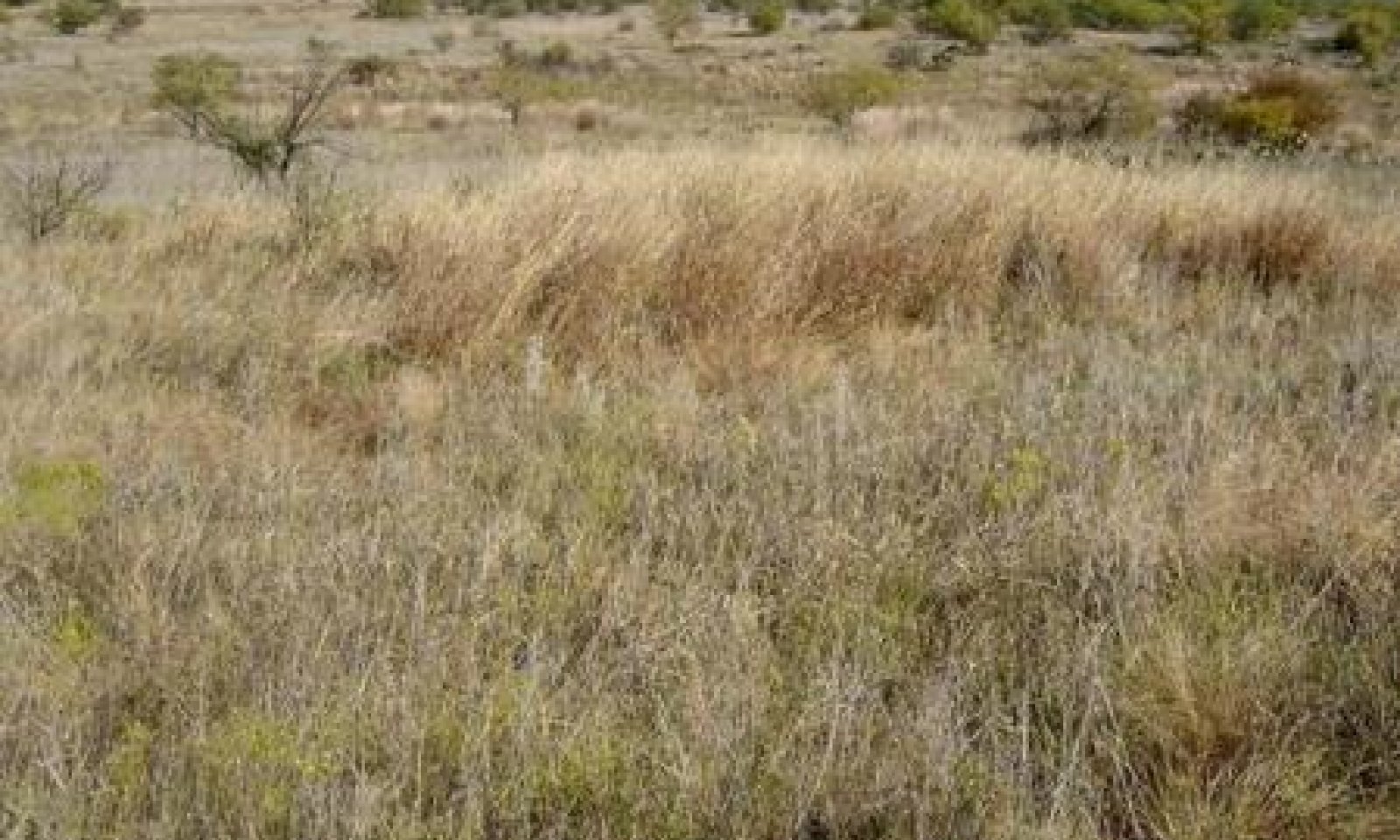

Natural Resources
Conservation Service
Ecological site R078AY120TX
Clay Slopes 25-28" PZ
Last updated: 9/12/2023
Accessed: 12/21/2025
General information
Provisional. A provisional ecological site description has undergone quality control and quality assurance review. It contains a working state and transition model and enough information to identify the ecological site.
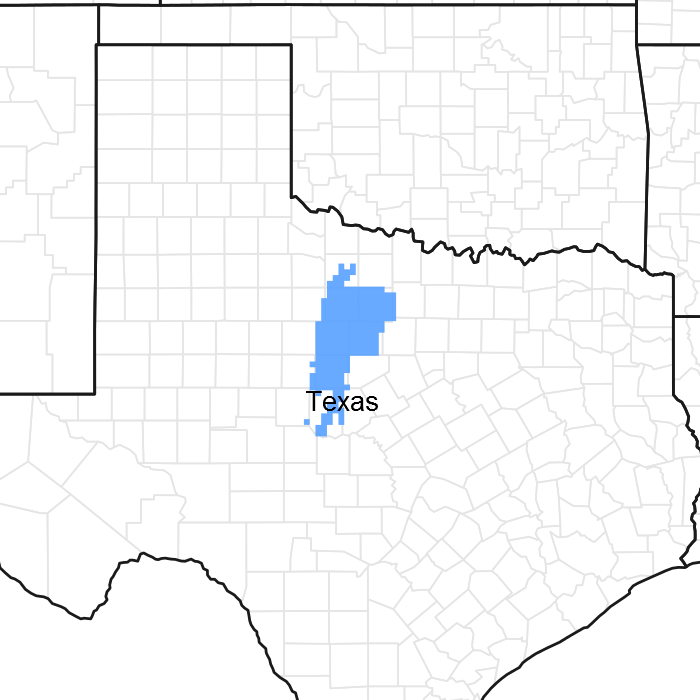
Figure 1. Mapped extent
Areas shown in blue indicate the maximum mapped extent of this ecological site. Other ecological sites likely occur within the highlighted areas. It is also possible for this ecological site to occur outside of highlighted areas if detailed soil survey has not been completed or recently updated.
MLRA notes
Major Land Resource Area (MLRA): 078A–Rolling Limestone Prairie
MLRA 78A is characterized by erosional plains with terraces adjacent to perennial and intermittent streams. Loamy and clayey soils range from shallow to deep over limestones and shales of Permian and Pennsylvanian age. Loamy soils are also associated with stream terraces.
LRU notes
NA
Classification relationships
This ecological site is correlated to soil components at the Major Land Resource Area (MLRA) level which is further described in USDA Ag Handbook 296.
Ecological site concept
This site occurs on deep clay soils on hillslopes and footslopes. The reference vegetation includes midgrasses with some tallgrasses and forbs. Few woody species persist in the reference community. Without proper grazing management and periodic fire or other brush control, the plant community may shift.
Associated sites
| R078AY117TX |
Clayey Upland 25-28" PZ Clayey Upland frequently occurs adjacent to and downslope of the Clay Slopes site. |
|---|---|
| R078AY123TX |
Rocky Hill 25-28" PZ Rocky Hill frequently occurs adjacent to and upslope of the Clay Slopes site. |
| R078AY126TX |
Shallow Clay 25-28" PZ Shallow Clay frequently occupies a similar landscape position and occurs adjacent to the Clay Slopes site. |
Similar sites
| R078AY126TX |
Shallow Clay 25-28" PZ The Clay Slopes site is frequently intermingled with the Shallow Clay site. Shallow Clay has less little bluestem and approximately 20% less production potential. |
|---|
Table 1. Dominant plant species
| Tree |
Not specified |
|---|---|
| Shrub |
Not specified |
| Herbaceous |
(1) Schizachyrium scoparium |
Physiographic features
These gently to steep sloping soils in the Clay Slopes ecological site occur on hill slopes, plains, and footslopes of ridges in the Rolling Limestone Prairie. These soils were formed in residuum and slope wash from claystone and siltstone. Slopes range from 1 to 8 percent. Elevation ranges from 1250 to 2250 feet.
Table 2. Representative physiographic features
| Landforms |
(1)
Hills
> Ridge
|
|---|---|
| Runoff class | High to very high |
| Elevation | 1,250 – 2,250 ft |
| Slope | 1 – 8% |
| Water table depth | 72 in |
| Aspect | Aspect is not a significant factor |
Climatic features
The climate of MLRA 78A is subtropical subhumid, with hot, dry summers and mild, dry winters. The Precipitation is similar north to south throughout the area, but decreases slightly from east to west. Temperature is similar east to west, but warmer from north to south. The area is clear to partly cloudy 80 percent of the time during the summer and 60 percent during the winter. Prevailing winds usually occur from a southerly direction and from north to northwest during passage of fall and winter cool fronts. March and April are the windiest months of the year.
Most precipitation occurs during the warmer months from April to October, in the form of rainfall during thunderstorms, often of short duration and high intensity, with considerable variation in amounts of rain and the area covered. Lightening, strong winds and hail frequently accompany the thunderstorms. Occasional tornadoes are not uncommon. Precipitation distribution is bimodal, with peaks occurring in May-June and September-October. The annual precipitation is about 25 to 28 inches. Timeliness and amount of rainfall are critical to plant growth. Rainfall events of one-fourth inch or less have limited effectiveness. High temperatures and dry winds reduce precipitation effectiveness. Snowfall represents only a small part of the annual precipitation. Snowfall of one inch or more occurs about one in five years, while snowfall of greater than five inches occurs only about one in ten years. Snow cover generally is of short duration (i.e. one to three days). Probability of snowfall is greater in the northern part of MLRA 78A.
Rainfall in the region is highly erratic, usually with more years below than above average. Periodic droughts of both temporary and prolonged duration are common to the area, although not predictable. Some of the more severe droughts of the past century in this region occurred during 1918-1919, early 1930’s, early to mid 1950’s, and mid to late 1990’s. High temperatures and dry winds accentuate the effects of drought. The extremes in climate have greater influence on plant communities than averages. Historic wet and dry cycles of extended duration likely influenced the evolution of drought hardiness and other survival traits in the endemic flora and fauna of the area.
Temperatures range from 31 degrees F in January to 96 degrees F in July, based on the 30-year average from 1971-2000, although considerably lower and higher temperatures for these months, respectively, have been recorded for some years. Periods of excessive heat, exceeding 100 degrees F, are not uncommon during July and August. Temperatures in the winter are generally mild, but abrupt and large drops in temperature can occur when polar air masses plunge southward across the area. The duration of freezing temperatures usually does not last more than three to five days. Temperatures in the spring are mild, both daytime and nighttime. Summer temperatures are hot, with highs generally in the 80’s to mid 90’s during the daytime, cooling down to the upper 70’s during the night. Fall is usually pleasant with mild, sunny days and crisp, cool nights, as cool northers periodically begin moving south this time of year. The area has a frost-free period of approximately 225 to 233 days and a freeze-free period of about 248 to 259 days. The primary growing season for warm-season plants is approximately 233 to 246 days, increasing from north to south. The first frost generally occurs around November 15 and the last frost occurs around March 15. These dates will vary from north to south and from year to year.
The average relative humidity ranges from 35 to 50 percent in mid-afternoon as diurnal air temperature nears maximum. As nighttime air temperature drops, relative humidity rises, averaging 70 to 80 percent by dawn.
Table 3. Representative climatic features
| Frost-free period (characteristic range) | 197-210 days |
|---|---|
| Freeze-free period (characteristic range) | 222-244 days |
| Precipitation total (characteristic range) | 27-29 in |
| Frost-free period (actual range) | 195-216 days |
| Freeze-free period (actual range) | 221-260 days |
| Precipitation total (actual range) | 27-30 in |
| Frost-free period (average) | 204 days |
| Freeze-free period (average) | 235 days |
| Precipitation total (average) | 28 in |
Figure 2. Monthly precipitation range
Figure 3. Monthly minimum temperature range
Figure 4. Monthly maximum temperature range
Figure 5. Monthly average minimum and maximum temperature
Figure 6. Annual precipitation pattern
Figure 7. Annual average temperature pattern
Climate stations used
-
(1) THROCKMORTON 7NE [USC00419016], Throckmorton, TX
-
(2) ALBANY [USC00410120], Albany, TX
-
(3) PUTNAM [USC00417327], Baird, TX
-
(4) COLEMAN [USC00411875], Coleman, TX
-
(5) CONCHO PK/IVIE RSVR [USC00411934], Millersview, TX
Influencing water features
N/A.
Wetland description
N/A.
Soil features
The soil series in the Clay Slopes ecological site consist of moderately deep to deep, well drained, very slowly permeable soils over claystone bedrock or dense clay.
Major Soil Taxonomic Units correlated to this site include: Throck.
Table 4. Representative soil features
| Parent material |
(1)
Residuum
–
claystone
|
|---|---|
| Surface texture |
(1) Silty clay loam (2) Stony clay loam (3) Clay loam |
| Family particle size |
(1) Clayey |
| Drainage class | Well drained |
| Permeability class | Slow to very slow |
| Soil depth | 29 – 60 in |
| Surface fragment cover <=3" | Not specified |
| Surface fragment cover >3" | Not specified |
| Available water capacity (0-40in) |
5 – 6 in |
| Calcium carbonate equivalent (0-40in) |
1 – 10% |
| Electrical conductivity (0-40in) |
2 mmhos/cm |
| Sodium adsorption ratio (0-40in) |
4 |
| Soil reaction (1:1 water) (0-40in) |
7.9 – 8.4 |
| Subsurface fragment volume <=3" (Depth not specified) |
15% |
| Subsurface fragment volume >3" (Depth not specified) |
13% |
Ecological dynamics
The Clay Slopes ecological site is located on gently sloping ridge tops, moderately steep uplands, and footslopes of steeper adjacent sites, primarily the Rocky Hill ecological site. The Clay Slopes site usually occurs as small, irregularly shaped areas, but may encompass larger contiguous areas. The reference plant community for the Clay Slopes ecological site is a midgrass prairie with a significant component of little bluestem. Tallgrasses such as big bluestem and Indiangrass may be found on the upslopes of the site where it transitions into the Rocky Hill ecological site. Evidence of the historic vegetation can be found in the journals and records of explorers, military expeditions, boundary survey teams, and early scientists who studied the vegetation.
Climate is a major factor influencing vegetation on the site. Long-term droughts lasting multiple years or growing seasons are infrequent, but when they do occur, they can have a negative impact on the vegetation. If abusive grazing occurs during or immediately following the drought period, the results can be devastating. The effects of erratic seasonal moisture and short-term dry spells lasting a few months are not as severe as those caused by long-term droughts.
Fire is also an important part of the ecosystem. Most ecosystems in the Rolling Limestone Prairie developed in a 4 to 6 year regime of recurring fires. Many of these fires resulted from lightning strikes during thunderstorms. Native Americans frequently set fires to manipulate the movement of bison and other animals as well as a defensive or offensive technique when dealing with their enemies. These historic fires were usually severe because of the amount of grass fuel available to carry the fire. The intensity of fires kept shrubs and sapling trees suppressed and allowed grasses and forbs to flourish. Tallgrass species are fire tolerant and are enhanced by periodic burning. Forbs usually increase for a year or two following these fires before the grasses become dominant again.
Lack of fire allows herbaceous vegetation to become senescent and may eventually lead to the loss of the most desirable species. Seedlings of non-native brush species and invasive weeds may encroach on the site from adjacent sites
Prior to settlement, this site was subject to periodic grazing and browsing by vast herds of bison, pronghorn, wild cattle, wild horses, and deer. At times these grazing and browsing episodes were intense and severe, but periods of heavy use were followed by long periods of non-use as the herds migrated to fresh grazing areas before returning to previously grazed areas. The grazed areas had an opportunity to rest, regrow, regain vigor, and reproduce prior to the next grazing event. Intervals between grazing periods were frequently influenced by the amount of time that had elapsed since the last fire on the area.
As the region was settled, fire was reduced or eliminated and grasslands were fenced off to control movement and facilitate grazing by domestic livestock. As a result of abusive grazing or lack of grazing and/or the elimination of fire, in association with extreme climatic events, the historic plant community has been altered on most Clay Slopes sites.
As the reference plant community declines on the site, the primary midgrasses and tallgrasses are replaced by early successional midgrasses, a significant increase in the shortgrasses, as well as annual grasses and forbs. Further deterioration leads to the loss of the perennial midgrass plant community as shortgrasses, annual forbs, and annual grasses, begin to dominate the site. If disturbances are severe enough for an extended period of time, annual species dominate and bare ground is extensive. This provides the opportunity for less desirable woody species such as mesquite, lotebush, pricklypear, and tasajillo to encroach from adjacent sites.
Selective individual removal of unwanted trees and shrubs is relatively easy and more practical when brush plants initially appear on the site. The increase of brush can be fairly rapid and the plants per acre will soon become too numerous for individual control to be feasible. Once woody plants become mature or develop into dense stands, control is expensive, uneconomical, impractical, and difficult to achieve. Brush management is most successful using a systems approach. Initial treatment by mechanical methods can be followed by using approved herbicides, and using prescribed fire as a maintenance technique. Prescribed grazing with a reasonable stocking rate can sustain the grass species composition and production at a near reference level.
Changes in plant communities and vegetation states on the Clay Slopes site are result of the combined impacts of natural events (rainfall, temperature, droughts, etc.) and the accompanying management systems implemented on the area (prescribed fire, grazing management, and brush management).
The following diagram suggests some pathways that the vegetation on this site might take. There may be other states not shown on the diagram. This information is intended to show what might happen in a given set of circumstances; it does not mean that this would happen the same way in every instance. Local professional guidance should always be sought before pursuing a treatment scenario.
State and transition model
More interactive model formats are also available.
View Interactive Models
Click on state and transition labels to scroll to the respective text
| T1A | - | Absence of disturbance and natural regeneration over time, may be coupled with excessive grazing pressure |
|---|---|---|
| T1B | - | Extensive soil disturbance followed by seeding |
| R2A | - | Adequate rest from defoliation, followed by reintroduction of historic disturbance regimes |
| T2A | - | Absence of disturbance and natural regeneration over time, may be coupled with excessive grazing pressure |
| T2B | - | Extensive soil disturbance followed by seeding |
| R3A | - | Adequate rest from defoliation and removal of woody canopy |
| T3A | - | Extensive soil disturbance followed by seeding |
| R4A | - | Natural regeneration over time coupled with excessive grazing pressure |
State 1 submodel, plant communities
State 2 submodel, plant communities
State 3 submodel, plant communities
State 4 submodel, plant communities
State 1
Mid/Tallgrass State
The Midgrass/Tallgrass Community is the reference plant community. In pristine conditions it is an open prairie dominated by midgrasses, scattered tallgrasses, some perennial forbs, and a few widely scattered shrubs. Sideoats grama and vine mesquite are the most abundant grasses. Tallgrasses such as big bluestem and Indiangrass may be found on the upslopes of the site or in areas with more open soil profiles. Woody canopy is less than 5%. Widely scattered shrubs and small trees include skunkbush sumac, catclaw acacia, lotebush, and hackberry. The Midgrass Community is totally dominated by midgrasses. A viable population of primary midgrasses still persists, but other midgrasses such as silver bluestem, Texas wintergrass, and dropseeds increase significantly. Early successional forbs and shortgrasses such as curlymesquite, buffalograss, and western ragweed begin to increase. The canopy of shrubs and trees begins to gradually increase as mesquite, pricklypear, lotebush, and similar species encroach from adjacent areas. Little bluestem and other tallgrasses are eliminated or severely reduced but may still be found in remote or protected areas. Woody canopy of shrubs and trees is less than 10%.
Dominant plant species
-
sideoats grama (Bouteloua curtipendula), grass
-
little bluestem (Schizachyrium scoparium), grass
Community 1.1
Mid/Tallgrass Prairie Community

Figure 8. 1.1 Mid/Tallgrass Prairie Community
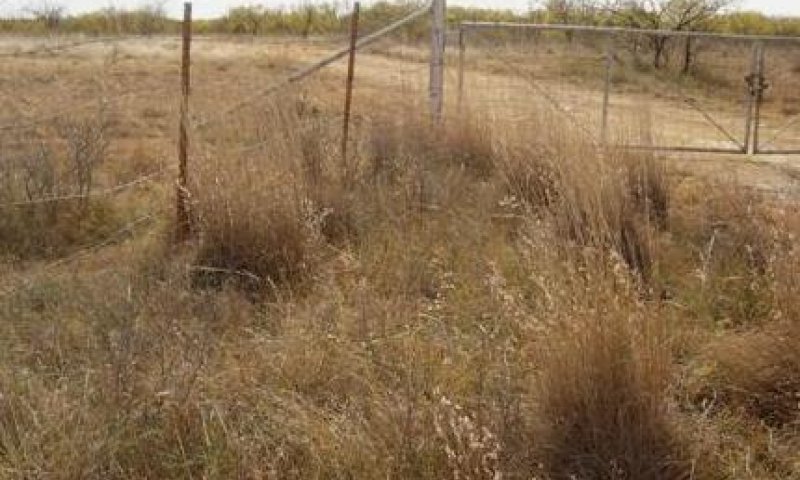
Figure 9. 1.1 Mid/Tallgrass Prairie Community (2)
The reference plant community for the Clay Slopes ecological site in the Rolling Limestone Prairie is a midgrass/tallgrass prairie. It is an open prairie dominated by midgrasses, scattered tallgrasses, some perennial forbs, and a few widely scattered shrubs. Sideoats grama and vine mesquite are the most abundant grasses. Little bluestem is a significant component of the plant community. Tallgrasses such as big bluestem and Indiangrass may be found on the upslopes of the site where it transitions into steeper sites such as the Rocky Hill ecological site, on areas with more open soil profiles, and during growing seasons with above average rainfall. Woody canopy is less than 5%. Widely scattered shrubs and small trees include skunkbush sumac, catclaw acacia, lotebush, and hackberry.
Figure 10. Annual production by plant type (representative values) or group (midpoint values)
Table 5. Annual production by plant type
| Plant type | Low (lb/acre) |
Representative value (lb/acre) |
High (lb/acre) |
|---|---|---|---|
| Grass/Grasslike | 1800 | 2500 | 3300 |
| Forb | 100 | 250 | 400 |
| Tree | 100 | 100 | 100 |
| Shrub/Vine | 200 | 150 | 100 |
| Total | 2200 | 3000 | 3900 |
Figure 11. Plant community growth curve (percent production by month). TX2532, Midgrass Prairie Community. Open midgrass prairie dominated by warm-season midgrasses with scattered tallgrasses, a diversity of forbs, and woody canopy less than 5%..
| Jan | Feb | Mar | Apr | May | Jun | Jul | Aug | Sep | Oct | Nov | Dec |
|---|---|---|---|---|---|---|---|---|---|---|---|
| J | F | M | A | M | J | J | A | S | O | N | D |
| 1 | 2 | 2 | 18 | 23 | 17 | 6 | 4 | 16 | 6 | 3 | 2 |
Community 1.2
Midgrass Prairie Community
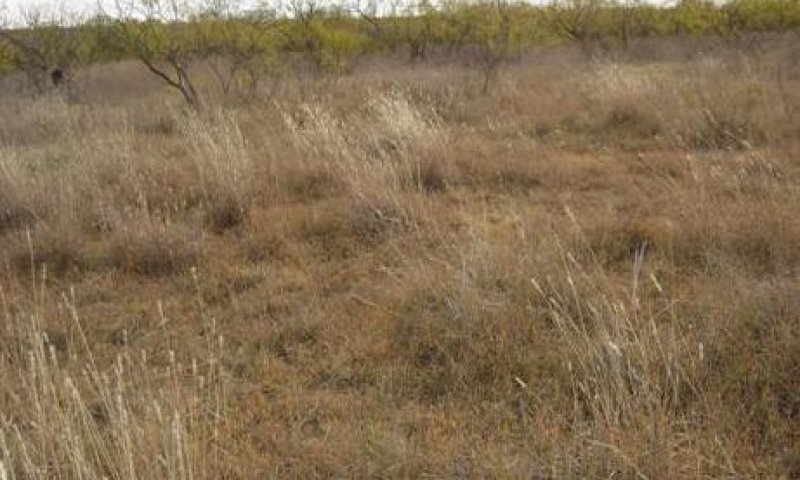
Figure 12. 1.2 Midgrass Prairie Community
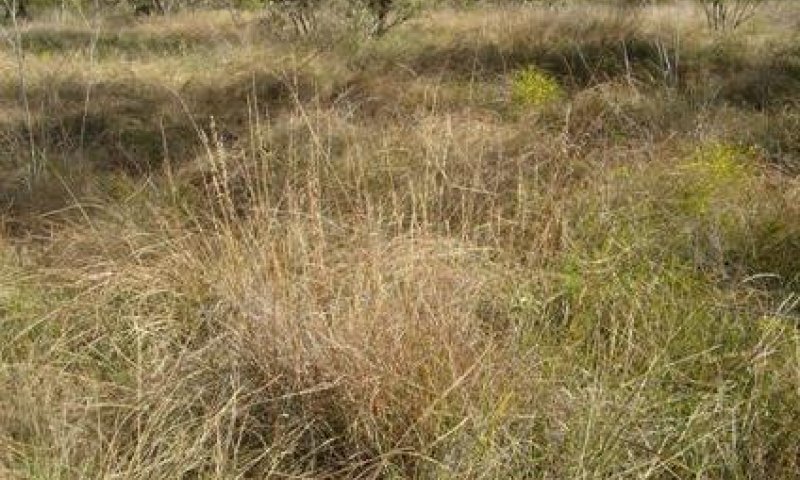
Figure 13. 1.2 Midgrass Prairie Community (2)
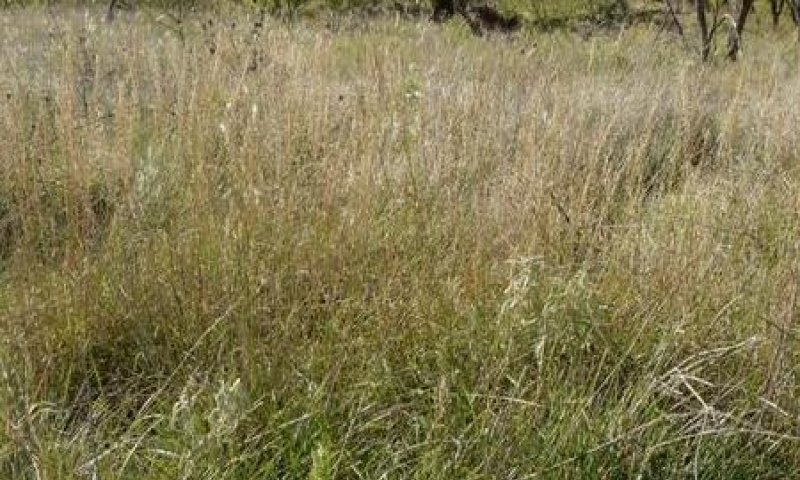
Figure 14. 1.2 Midgrass Prairie Community (3)
Uncontrolled grazing, elimination of fire from the ecosystem, and severe drought conditions result in the shift from a midgrass/tallgrass plant community to a midgrass plant community totally dominated by midgrasses. A viable population of primary midgrasses still persists, but other midgrasses such as silver bluestem, Texas wintergrass, and dropseeds increase significantly. Early successional forbs and shortgrasses such as curlymesquite, buffalograss, and western ragweed begin to increase. The canopy of shrubs and trees begins to gradually increase as mesquite, pricklypear, lotebush, and similar species encroach from adjacent areas. Little bluestem and other tallgrasses are eliminated or severely reduced but may still be found in remote or protected areas. Woody canopy of shrubs and trees is less than 10%.
Figure 15. Annual production by plant type (representative values) or group (midpoint values)
Table 6. Annual production by plant type
| Plant type | Low (lb/acre) |
Representative value (lb/acre) |
High (lb/acre) |
|---|---|---|---|
| Grass/Grasslike | 1050 | 1750 | 2400 |
| Forb | 300 | 350 | 450 |
| Shrub/Vine | 250 | 200 | 150 |
| Tree | 100 | 100 | 100 |
| Total | 1700 | 2400 | 3100 |
Figure 16. Plant community growth curve (percent production by month). TX2514, Midgrass Prairie Community. Midgrass Prairie Community..
| Jan | Feb | Mar | Apr | May | Jun | Jul | Aug | Sep | Oct | Nov | Dec |
|---|---|---|---|---|---|---|---|---|---|---|---|
| J | F | M | A | M | J | J | A | S | O | N | D |
| 1 | 2 | 5 | 12 | 25 | 20 | 5 | 5 | 14 | 8 | 2 | 1 |
Pathway 1.1A
Community 1.1 to 1.2


Uncontrolled or mismanaged grazing for an extended period of time, elimination of fire from the ecosystem, and/or the effects of extended drought are the primary factors that cause the reference plant community to shift from an open midgrass/tallgrass prairie to an open prairie that is almost exclusively midgrasses, with only remnants of tallgrasses remaining. As little bluestem and other tallgrasses decline, they are initially replaced by midgrasses such as sideoats grama, vine mesquite, and Arizona cottontop. Another community of competitive midgrasses including silver bluestem, meadow dropseed, white tridens, and Texas wintergrass, begins to increase noticeably. Elimination or interruption of the natural fire cycle also contributes to an imbalance in the original plant community, and tends to favor the more competitive and aggressive midgrasses and perennial forbs. Shortgrasses and more aggressive perennial forbs gradually begin to increase at this stage. Woody canopy may increase slightly.
Pathway 1.2A
Community 1.2 to 1.1


A viable population of little bluestem, sideoats grama, Arizona cottontop, and vine mesquite, as well as sufficient individual plants of big bluestem and Indiangrass still exists on this site. At this stage, implementation of a prescribed grazing management strategy and re-introduction of periodic fire into the ecosystem will reverse the shift away from the original plant community. A reasonable and sustainable stocking rate in combination with a grazing system to control the timing, frequency, duration, and degree of grazing can result in the re-establishment of the balanced and diverse midgrass/tallgrass prairie. A strategically planned and implemented prescribed burning program will accelerate the recovery process. Tree and shrub canopy may have increased slightly, but does not require extensive treatment. However, individual treatment of trees and shrubs that have increased or invaded can be an effective and economical method of maintaining the plant community at this stage.
Conservation practices
| Brush Management | |
|---|---|
| Prescribed Burning | |
| Prescribed Grazing |
State 2
Mixedgrass State
In the Midgrass/Shortgrass Community, primary midgrasses including sideoats grama, vine mesquite, and Arizona cottontop decline drastically and little bluestem and other tallgrasses are almost completely eliminated from the site. Midgrasses such as silver bluestem, dropseeds, and white tridens increase significantly. Shortgrasses such as curlymesquite, buffalograss, hairy grama, and slim tridens increase and become co-dominant with midgrasses. Woody canopy increases to as much as 15%. Texas wintergrass increases as the woody canopy increases. The Shortgrass/Annuals Community is experiencing continued deterioration of the plant community which eventually results in a plant community characterized by shortgrasses such as buffalograss, curlymesquite, threeawns and Texas grama, encroachment of annual grasses and forbs, an increase in shrubs, and an increase in bare ground. Western ragweed and broomweed are the dominant forbs. Mesquite, catclaw acacia, lotebush, pricklypear, and other shrubs increase in density or invade from adjacent sites. Woody canopy increases to approximately 20%. Texas wintergrass becomes the dominant midgrass as the density and canopy of shrubs continues to increase.
Dominant plant species
-
silver bluestem (Bothriochloa saccharoides), grass
-
dropseed (Sporobolus), grass
Community 2.1
Midgrass/Shortgrass Community
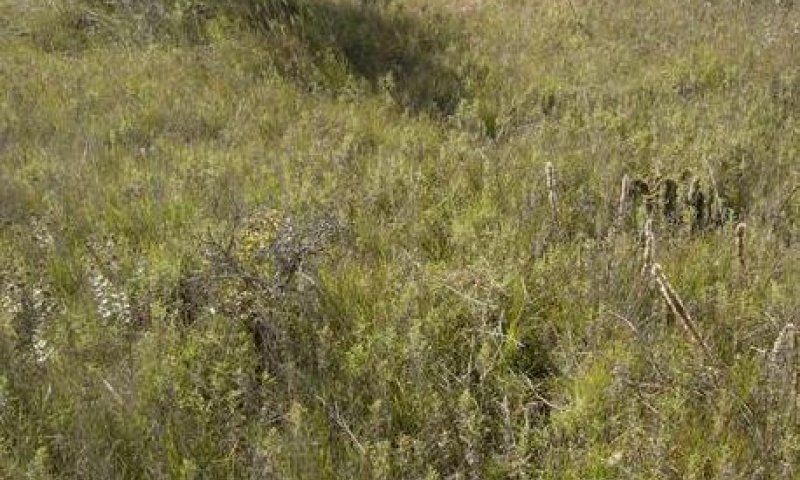
Figure 17. 2.1 Midgrass/Shortgrass Community
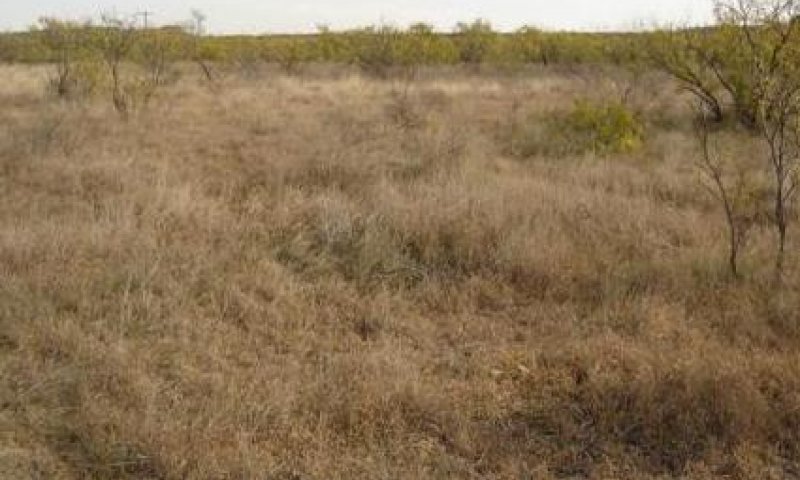
Figure 18. 2.1 Midgrass/Shortgrass Community (2)
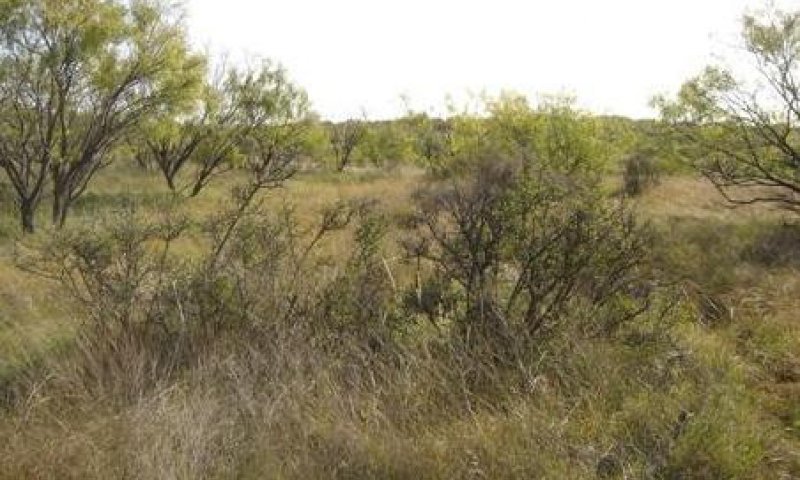
Figure 19. 2.1 Midgrass/Shortgrass Community (3)
Primary midgrasses including sideoats grama, vine mesquite, and Arizona cottontop decline drastically and little bluestem and other tallgrasses are almost completely eliminated from the site. Midgrasses such as silver bluestem, dropseeds, and white tridens increase significantly. Shortgrasses such as curlymesquite, buffalograss, hairy grama, and slim tridens increase and become co-dominant with midgrasses. Woody canopy increases to as much as 15% as shrubs and woody plants increase in density and begin to encroach from adjacent areas. Texas wintergrass increases as the woody canopy increases.
Figure 20. Annual production by plant type (representative values) or group (midpoint values)
Table 7. Annual production by plant type
| Plant type | Low (lb/acre) |
Representative value (lb/acre) |
High (lb/acre) |
|---|---|---|---|
| Grass/Grasslike | 350 | 900 | 1500 |
| Forb | 450 | 450 | 500 |
| Shrub/Vine | 300 | 250 | 200 |
| Tree | 100 | 100 | 100 |
| Total | 1200 | 1700 | 2300 |
Figure 21. Plant community growth curve (percent production by month). TX2533, Midgrass/Shortgrass Prairie, 20% woody canopy. Midgrasses are dominant, shortgrasses are sub-dominant, tallgrasses are almost totally eliminated. Annuals and early successional forbs and grasses are abundant. Shrubs encroach from adjacent areas and increase in density and canopy..
| Jan | Feb | Mar | Apr | May | Jun | Jul | Aug | Sep | Oct | Nov | Dec |
|---|---|---|---|---|---|---|---|---|---|---|---|
| J | F | M | A | M | J | J | A | S | O | N | D |
| 2 | 3 | 5 | 12 | 20 | 21 | 5 | 4 | 12 | 10 | 4 | 2 |
Community 2.2
Shortgrass/Annuals Community
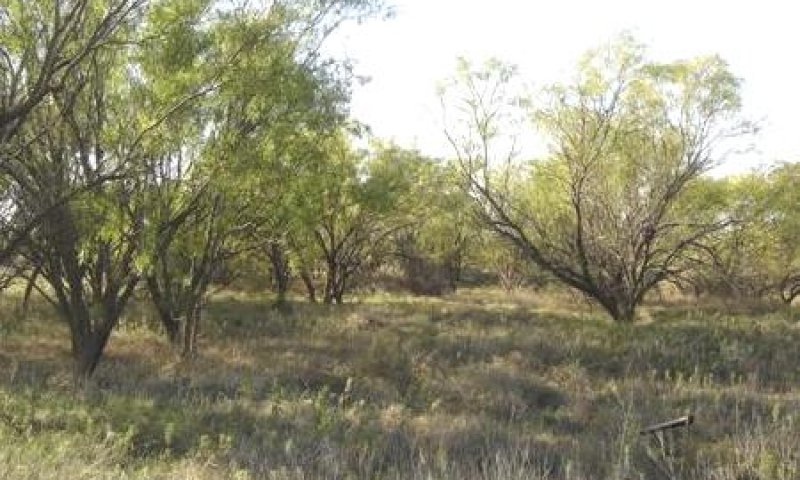
Figure 22. 2.2 Shortgrass/Annuals Community
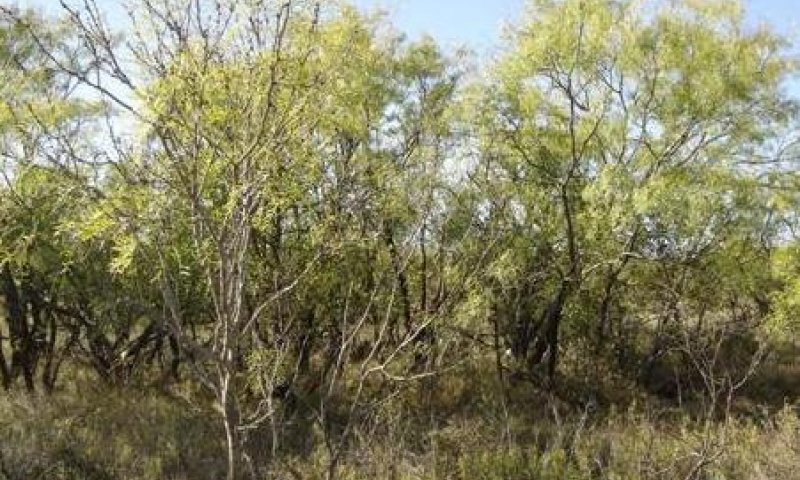
Figure 23. 2.2 Shortgrass/Annuals Community (2)
Severe disturbances such as abusive grazing, persistent drought conditions, or combinations of abusive grazing, extreme climatic conditions, and other factors, cause the plant community to change dramatically. Continued deterioration of the plant community eventually results in a plant community characterized by shortgrasses such as buffalograss, curlymesquite, threeawns and Texas grama, encroachment of annual grasses and forbs, an increase in shrubs, and an increase in bare ground. Western ragweed and broomweed are the dominant forbs. Mesquite, catclaw acacia, lotebush, pricklypear, and other shrubs increase in density or invade from adjacent sites. Woody canopy increases to approximately 20%. Texas wintergrass becomes the dominant midgrass as the density and canopy of shrubs continues to increase. Bare ground begins to appear in some areas and can become a serious problem in the most deteriorated state.
Figure 24. Annual production by plant type (representative values) or group (midpoint values)
Table 8. Annual production by plant type
| Plant type | Low (lb/acre) |
Representative value (lb/acre) |
High (lb/acre) |
|---|---|---|---|
| Grass/Grasslike | 250 | 600 | 1000 |
| Forb | 500 | 500 | 450 |
| Shrub/Vine | 350 | 300 | 250 |
| Tree | 100 | 100 | 100 |
| Total | 1200 | 1500 | 1800 |
Figure 25. Plant community growth curve (percent production by month). TX2531, Shortgrass/Annuals/Mesquite and Shrubs . Shortgrass/Annuals/Mesquite and Shrubs – buffalograss, curlymesquite, broomweed, annual forbs and grasses, mesquite, lotebush..
| Jan | Feb | Mar | Apr | May | Jun | Jul | Aug | Sep | Oct | Nov | Dec |
|---|---|---|---|---|---|---|---|---|---|---|---|
| J | F | M | A | M | J | J | A | S | O | N | D |
| 3 | 4 | 8 | 16 | 18 | 12 | 4 | 4 | 10 | 12 | 6 | 3 |
Pathway 2.1A
Community 2.1 to 2.2


At this stage, the site is characterized by shortgrasses, encroachment of annual grasses and forbs, an increase in shrubs, and an increase in bare ground as the result of continuous heavy grazing, extended drought, and lack of fire. Curlymesquite, buffalograss, hairy grama, slim tridens, Texas grama, and threeawns become the dominant perennial grasses. Annual forbs and grasses increase significantly as bare ground increases. Texas wintergrass becomes the dominant midgrass as the density and canopy of shrubs continues to increase. Silver bluestem, meadow dropseed, white tridens and remnant individual plants of sideoats grama and vine mesquite still persist.
Pathway 2.2A
Community 2.2 to 2.1


Implementation of a grazing management plan to is necessary to allow midgrasses to be competitive with the shortgrasses and annuals, and re-establish themselves. Prescribed burning will assist with the recovery and maintenance of the desired plant community.
Conservation practices
| Prescribed Burning | |
|---|---|
| Prescribed Grazing |
State 3
Shrubland State
The Shrubland Community is dominated by non-native and invasive native shrubs such as mesquite, catclaw acacia, lotebush, pricklypear, and tasajillo with a canopy of 25% or more. The woody canopy has a noticeable detrimental effect on the understory vegetation. Extensive areas of bare ground may occur. Shortgrasses as well as annual grasses and forbs, and early successional midgrasses increase dramatically and invade from adjacent sites. Texas wintergrass and other shade tolerant species will also increase. If fields are abandoned and left to re-vegetate naturally, weedy grasses, forbs and shrubs will become established.
Dominant plant species
-
honey mesquite (Prosopis glandulosa), shrub
-
lotebush (Ziziphus obtusifolia), shrub
-
pricklypear (Opuntia), shrub
Community 3.1
Shrubland Community
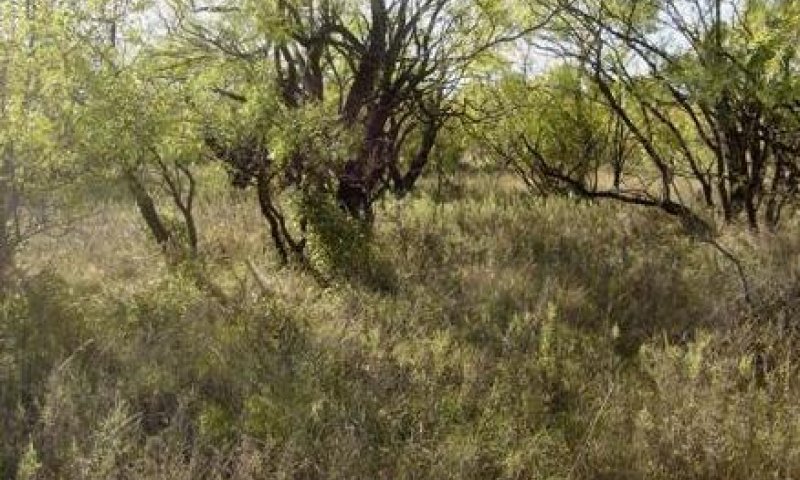
Figure 26. 3.1 Shrubland Community
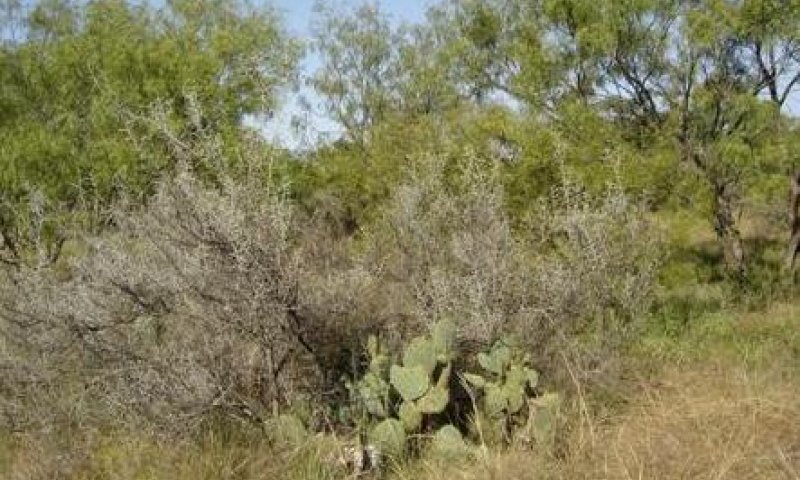
Figure 27. 3.1 Shrubland Community (2)
Continuous abusive grazing, lack of fire, and extended drought can all be major factors in the deterioration of the plant community from an open prairie to a shrub dominated site. The site is dominated by non-native and invasive native shrubs such as mesquite, catclaw acacia, lotebush, pricklypear, and tasajillo with a canopy of 25% or more. The woody canopy has a noticeable detrimental effect on the understory vegetation. Extensive areas of bare ground may occur. Opportunistic annual forbs and grasses become established on the exposed soil surface. Shortgrasses as well as annual grasses and forbs, and early successional midgrasses increase dramatically and invade from adjacent sites. Texas wintergrass and other shade tolerant species will also increase. If fields are abandoned and left to re-vegetate naturally, weedy grasses, forbs and shrubs will become established.
Figure 28. Annual production by plant type (representative values) or group (midpoint values)
Table 9. Annual production by plant type
| Plant type | Low (lb/acre) |
Representative value (lb/acre) |
High (lb/acre) |
|---|---|---|---|
| Grass/Grasslike | 200 | 400 | 600 |
| Forb | 300 | 400 | 500 |
| Shrub/Vine | 500 | 400 | 300 |
| Tree | 100 | 100 | 100 |
| Total | 1100 | 1300 | 1500 |
Figure 29. Plant community growth curve (percent production by month). TX2519, Shrubland/Shortgrass Community. Shrubland and Shortgrass Dominated community..
| Jan | Feb | Mar | Apr | May | Jun | Jul | Aug | Sep | Oct | Nov | Dec |
|---|---|---|---|---|---|---|---|---|---|---|---|
| J | F | M | A | M | J | J | A | S | O | N | D |
| 2 | 3 | 10 | 10 | 25 | 20 | 5 | 5 | 10 | 5 | 3 | 2 |
State 4
Converted Land State
Since the site generally occurs as small irregularly shaped areas, the Converted Land State Community is usually treated and managed in conjunction with surrounding sites. Kleingrass, Old World bluestem, and King Ranch bluestem are the most commonly seeded introduced grasses, but some areas have been planted to Bermudagrass. The areas that have been converted to cropland are primarily planted to wheat, oats, or forage sorghum. After conversion to other land uses, these areas must be intensively managed in order to maintain production and quality. Production potential for seeded species and crops is moderately high. The Abandoned Community occurs when over time, many of these cultivated and intensively managed areas have been abandoned because of adverse economic conditions. Adverse economic conditions, drought, and other outside factors may result in these areas being abandoned or neglected. If fertility is not maintained, and weed control is not routinely carried out, the land will tend to revert to early successional plants such as annual forbs and grasses. These abandoned lands have deteriorated to the point that they will never return to historical vegetation because of soil degradation and lack of natural seed source.
Dominant plant species
-
kleingrass (Panicum coloratum), grass
Community 4.1
Converted Land Community
Since the site generally occurs as small irregularly shaped areas, it is usually treated and managed in conjunction with surrounding sites. Kleingrass, Old World bluestem, and King Ranch bluestem are the most commonly seeded introduced grasses, but some areas have been planted to Bermudagrass. The areas that have been converted to cropland are primarily planted to wheat, oats, or forage sorghum. After conversion to other land uses, these areas must be intensively managed in order to maintain production and quality. Production potential for seeded species and crops is moderately high. Refer to Forage Suitability Group Descriptions for specific recommendations, production potentials, species adaptation, etc. In the highest state of production following conversion, the trees, shrubs and forbs have been severely reduced or eliminated from the site. The more shrubs, trees, and forbs that occur on a converted site, the lower the overall forage production would be. The annual production figures below reflect this change.
Figure 30. Annual production by plant type (representative values) or group (midpoint values)
Table 10. Annual production by plant type
| Plant type | Low (lb/acre) |
Representative value (lb/acre) |
High (lb/acre) |
|---|---|---|---|
| Grass/Grasslike | 1900 | 2900 | 3900 |
| Forb | 100 | 100 | 100 |
| Tree | 0 | 0 | 0 |
| Shrub/Vine | 0 | 0 | 0 |
| Total | 2000 | 3000 | 4000 |
Figure 31. Plant community growth curve (percent production by month). TX2527, Converted Land Community. Planted into monocultures of introduced grasses and cropland species..
| Jan | Feb | Mar | Apr | May | Jun | Jul | Aug | Sep | Oct | Nov | Dec |
|---|---|---|---|---|---|---|---|---|---|---|---|
| J | F | M | A | M | J | J | A | S | O | N | D |
| 1 | 3 | 5 | 14 | 23 | 20 | 5 | 4 | 12 | 8 | 3 | 2 |
Community 4.2
Abandoned Land Community
In time, many of these cultivated and intensively managed areas have been abandoned because of adverse economic conditions. Adverse economic conditions, drought, and other outside factors may result in these areas being abandoned or neglected. If fertility is not maintained, and weed control is not routinely carried out, the land will tend to revert to early successional plants such as annual forbs and grasses. These abandoned lands have deteriorated to the point that they will never return to historical vegetation because of soil degradation and lack of natural seed source. Abandoned croplands and reseeded areas tend to revert back to a more natural state through the process of secondary succession. This is a very slow process that takes decades or centuries to evolve, dependent on the status of the area at the time it is abandoned. The first plants to establish are “pioneer plants” (annual forbs and grasses followed by early successional shortgrasses and midgrasses). If managed properly, some of these abandoned areas may eventually begin to approximate the diversity and complexity of the native Clay Slopes ecosystem. Midgrasses, perennial forbs, and tallgrasses may begin to establish if the area is carefully managed. However, it is highly unlikely that abandoned lands can ever return to climax vegetation within a reasonable period of time.
Figure 32. Annual production by plant type (representative values) or group (midpoint values)
Table 11. Annual production by plant type
| Plant type | Low (lb/acre) |
Representative value (lb/acre) |
High (lb/acre) |
|---|---|---|---|
| Grass/Grasslike | 200 | 300 | 400 |
| Forb | 200 | 250 | 300 |
| Tree | 100 | 50 | 0 |
| Shrub/Vine | 50 | 50 | 0 |
| Total | 550 | 650 | 700 |
Figure 33. Plant community growth curve (percent production by month). TX2528, Abandoned Land Community. Abandoned croplands, pasturelands, and seeded areas. .
| Jan | Feb | Mar | Apr | May | Jun | Jul | Aug | Sep | Oct | Nov | Dec |
|---|---|---|---|---|---|---|---|---|---|---|---|
| J | F | M | A | M | J | J | A | S | O | N | D |
| 3 | 4 | 8 | 16 | 18 | 12 | 4 | 4 | 10 | 12 | 6 | 3 |
Pathway 4.1A
Community 4.1 to 4.2
After conversion to other land uses, these areas must be intensively managed in order to maintain production and quality. Economics, drought, and other outside factors may result in these areas being abandoned or neglected. If fertility is not maintained, and weed control is not routinely carried out, the land will tend to revert to “pioneer” plants such as annual forbs and grasses.
Pathway 4.2A
Community 4.2 to 4.1
Abandoned lands can be re-established to cropland, introduced pasture, or seeded monocultures by cultivation to control unwanted vegetation, seedbed preparation, and seeding or planting desired vegetation with normal with seedbed preparation.
Conservation practices
| Brush Management | |
|---|---|
| Prescribed Burning | |
| Forage and Biomass Planting | |
| Prescribed Grazing | |
| Range Planting | |
| Nutrient Management | |
| Integrated Pest Management (IPM) |
Transition T1A
State 1 to 2
Continued abusive grazing practices and a lack of fire will eventually result in further deterioration of the midgrass plant community. This decline may be intensified or accelerated by drought conditions and/or failure to carry out maintenance brush management practices. As a result of this level of mismanagement, little bluestem and other tallgrasses are eliminated from the site except for remnant plants that are protected. Sideoats grama, vine mesquite, and Arizona cottontop are drastically reduced. Silver bluestem, meadow dropseed, and white tridens become the dominant midgrasses. Shortgrasses including curlymesquite, buffalograss, hairy grama, and slim tridens increase significantly and become co-dominants. Non-native and invasive native shrubs begin to increase on the site and invade from adjacent sites. The increase in density and woody canopy of shrubs begins to have an adverse effect on the understory herbaceous vegetation because of increased shading and competition for space and soil moisture. Texas wintergrass begins to increase significantly as the woody canopy increases.
Transition T1B
State 1 to 4
This plant community can be converted to cropland or seeded introduced grasses or commercially available native grasses. Because the site usually occurs as small irregularly shaped areas, it is usually treated and managed in conjunction with surrounding sites. Kleingrass, Old World bluestem, and King Ranch bluestem are the most commonly seeded introduced grasses, but some areas have been planted to bermudagrass. The areas that have been converted to cropland are primarily planted to wheat, oats, or forage sorghum. Seedbed preparation can be accomplished with normal cultivation equipment and desired vegetation can be seeded or planted. This is a terminal state because the soil has been altered and the historic plant species no longer exist on the site.
Constraints to recovery. Extensive soil disturbance followed by seeding
Restoration pathway R2A
State 2 to 1
At this stage, there is no longer a viable population of the original primary midgrasses and tallgrasses to reproduce sufficient seed to enable the plant community to recover through management practices alone. Range planting is needed to re-introduce the desired midgrass and tallgrass species back into the plant community. Implementation of a grazing management plan is necessary to allow establishment of seeded vegetation and control the timing, frequency, duration, and degree of grazing following establishment. Brush management is needed when the density and canopy of shrubs and trees begins to have an adverse effect on the desired grasses and forbs. Periodic prescribed burning is needed to keep woody species under control, encourage diversity in the grass and forb plant community, and assist with the recovery and maintenance of the desired plant community.
Conservation practices
| Brush Management | |
|---|---|
| Prescribed Burning | |
| Prescribed Grazing | |
| Range Planting |
Transition T2A
State 2 to 3
Continuous abusive grazing, lack of fire, and extended drought can all be major factors in the deterioration of the plant community from an open prairie to a shrub dominated site. The site is dominated by non-native and invasive native shrubs with a canopy of 25% or more. The woody canopy has a noticeable detrimental effect on the understory vegetation. Extensive areas of bare ground may occur. Shortgrasses as well as annual grasses and forbs, and early successional midgrasses increase dramatically and invade from adjacent sites. Texas wintergrass and other shade tolerant species increase. The site is highly susceptible to water erosion. Once the site has declined to this stage, it will not return to a higher state of vegetation through management practices alone.
Transition T2B
State 2 to 4
This plant community can be converted to cropland or seeded introduced grasses or commercially available native grasses, but it may require mechanical brush management to remove unwanted shrubs and trees if they are dense enough to interfere with seedbed preparation, seeding or planting operations, or management following establishment. Seedbed preparation methods may require heavier equipment, and seeding or planting methods may have to be modified to overcome more intensive land preparation treatments. Because the site usually occurs as small irregularly shaped areas, it is usually treated and managed in conjunction with surrounding sites. Kleingrass, Old World bluestem, and King Ranch bluestem are the most commonly seeded introduced grasses, but some areas have been planted to Bermudagrass. The areas that have been converted to cropland are primarily planted to wheat, oats, or forage sorghum. Seedbed preparation can be accomplished with normal cultivation equipment and desired vegetation can be seeded or planted. This is a terminal state because the soil has been altered and the historic plant species no longer exist on the site.
Restoration pathway R3A
State 3 to 2
It is probably not practical or economically feasible to attempt to restore the reference plant community through brush management and revegetation. In order to have any possibility of recovery from this state, a carefully planned and implemented prescribed grazing management strategy must be implemented, extensive brush management is required, and range planting is necessary to re-introduce perennial grasses and forbs to the plant community. These treatments may result in the re-establishment of establish a perennial grass plant community with most of the primary grasses, but lacking the diversity of forbs and minor grasses found in the reference plant community. This is a difficult, risky, and expensive consideration. If the reseeded areas become established, a prescribed burning management program is needed to maintain balance, diversity, and vigor in the plant community.
Conservation practices
| Brush Management | |
|---|---|
| Prescribed Burning | |
| Range Planting | |
| Prescribed Grazing |
Transition T3A
State 3 to 4
This plant community can be converted to cropland or seeded introduced grasses or commercially available native grasses, but extensive brush management is required to clear the land. Seedbed preparation techniques with heavy equipment are required and seeding or planting methods may have to be modified to overcome more intensive land preparation treatments. These treatments are radical, expensive, and generally not recommended. Because the site usually occurs as small irregularly shaped areas, it is usually treated and managed in conjunction with surrounding sites. Kleingrass, Old World bluestem, and King Ranch bluestem are the most commonly seeded introduced grasses, but some areas have been planted to Bermudagrass. The areas that have been converted to cropland are primarily planted to wheat, oats, or forage sorghum. Seedbed preparation can be accomplished with normal cultivation equipment and desired vegetation can be seeded or planted. This is a terminal state because the soil has been altered and the historic plant species no longer exist on the site.
Restoration pathway R4A
State 4 to 2
Abusive grazing, lack of fire, lack of brush management, and abandonment are factors that result in these previously treated areas reverting to areas that are dominated by bare ground, annual grasses and forbs, low successional perennial grasses and forbs, and stunted shrubs. The site is highly susceptible to water erosion. In this scenario, this is a terminal state because the soil has been altered and the historic plant species no longer exist on the site.
Additional community tables
Table 12. Community 1.1 plant community composition
| Group | Common name | Symbol | Scientific name | Annual production (lb/acre) | Foliar cover (%) | |
|---|---|---|---|---|---|---|
|
Grass/Grasslike
|
||||||
| 1 | Tallgrass | 100–500 | ||||
| little bluestem | SCSC | Schizachyrium scoparium | 100–500 | – | ||
| 2 | Tallgrasses | 0–350 | ||||
| big bluestem | ANGE | Andropogon gerardii | 0–350 | – | ||
| Indiangrass | SONU2 | Sorghastrum nutans | 0–150 | – | ||
| switchgrass | PAVI2 | Panicum virgatum | 0–100 | – | ||
| 3 | Midgrasses | 500–1300 | ||||
| sideoats grama | BOCU | Bouteloua curtipendula | 200–550 | – | ||
| silver beardgrass | BOLAT | Bothriochloa laguroides ssp. torreyana | 50–200 | – | ||
| Arizona cottontop | DICA8 | Digitaria californica | 0–200 | – | ||
| vine mesquite | PAOB | Panicum obtusum | 50–200 | – | ||
| Drummond's dropseed | SPCOD3 | Sporobolus compositus var. drummondii | 50–150 | – | ||
| sand dropseed | SPCR | Sporobolus cryptandrus | 0–100 | – | ||
| white tridens | TRAL2 | Tridens albescens | 0–100 | – | ||
| composite dropseed | SPCOC2 | Sporobolus compositus var. compositus | 0–100 | – | ||
| cane bluestem | BOBA3 | Bothriochloa barbinodis | 0–100 | – | ||
| Texas cupgrass | ERSE5 | Eriochloa sericea | 0–100 | – | ||
| 4 | Short/Midgrasses | 300–800 | ||||
| curly-mesquite | HIBE | Hilaria belangeri | 100–400 | – | ||
| buffalograss | BODA2 | Bouteloua dactyloides | 50–200 | – | ||
| hairy grama | BOHI2 | Bouteloua hirsuta | 0–150 | – | ||
| slim tridens | TRMUM | Tridens muticus var. muticus | 0–150 | – | ||
| Texas grama | BORI | Bouteloua rigidiseta | 0–100 | – | ||
| Hall's panicgrass | PAHAH | Panicum hallii var. hallii | 0–100 | – | ||
| purple threeawn | ARPU9 | Aristida purpurea | 50–100 | – | ||
| Wright's threeawn | ARPUW | Aristida purpurea var. wrightii | 50–100 | – | ||
| 5 | Cool-season grasses | 100–450 | ||||
| Texas wintergrass | NALE3 | Nassella leucotricha | 100–450 | – | ||
|
Forb
|
||||||
| 6 | Forbs | 100–350 | ||||
| white heath aster | SYERE | Symphyotrichum ericoides var. ericoides | 0–100 | – | ||
| Cuman ragweed | AMPS | Ambrosia psilostachya | 0–100 | – | ||
| white sagebrush | ARLUM2 | Artemisia ludoviciana ssp. mexicana | 0–100 | – | ||
| Engelmann's daisy | ENPE4 | Engelmannia peristenia | 0–100 | – | ||
| buckwheat | ERIOG | Eriogonum | 0–75 | – | ||
| Leavenworth's eryngo | ERLE11 | Eryngium leavenworthii | 0–75 | – | ||
| green comet milkweed | ASVI | Asclepias viridiflora | 0–75 | – | ||
| American star-thistle | CEAM2 | Centaurea americana | 0–75 | – | ||
| purple prairie clover | DAPU5 | Dalea purpurea | 0–75 | – | ||
| snow on the mountain | EUMA8 | Euphorbia marginata | 0–75 | – | ||
| Indian blanket | GAPU | Gaillardia pulchella | 0–75 | – | ||
| Dakota mock vervain | GLBIB | Glandularia bipinnatifida var. bipinnatifida | 0–75 | – | ||
| curlycup gumweed | GRSQ | Grindelia squarrosa | 0–75 | – | ||
| hoary false goldenaster | HECA8 | Heterotheca canescens | 0–75 | – | ||
| Chalk Hill hymenopappus | HYTE2 | Hymenopappus tenuifolius | 0–75 | – | ||
| plains blackfoot | MELE2 | Melampodium leucanthum | 0–75 | – | ||
| lemon beebalm | MOCI | Monarda citriodora | 0–75 | – | ||
| bluestem pricklypoppy | ARAL3 | Argemone albiflora | 0–75 | – | ||
| compassplant | SILA3 | Silphium laciniatum | 0–75 | – | ||
| scurfpea | PSORA2 | Psoralidium | 0–50 | – | ||
| trailing krameria | KRLA | Krameria lanceolata | 0–50 | – | ||
| Illinois bundleflower | DEIL | Desmanthus illinoensis | 0–50 | – | ||
| Texas stork's bill | ERTE13 | Erodium texanum | 0–50 | – | ||
| evening primrose | OENOT | Oenothera | 0–25 | – | ||
| slender greenthread | THSI | Thelesperma simplicifolium | 0–25 | – | ||
| noseburn | TRAGI | Tragia | 0–25 | – | ||
|
Shrub/Vine
|
||||||
| 7 | Shrubs/Vines | 100–250 | ||||
| stretchberry | FOPU2 | Forestiera pubescens | 0–100 | – | ||
| fragrant sumac | RHAR4 | Rhus aromatica | 0–100 | – | ||
| gum bully | SILA20 | Sideroxylon lanuginosum | 0–100 | – | ||
| catclaw acacia | ACGRG3 | Acacia greggii var. greggii | 0–75 | – | ||
| lotebush | ZIOB | Ziziphus obtusifolia | 0–75 | – | ||
| Christmas cactus | CYLE8 | Cylindropuntia leptocaulis | 0–50 | – | ||
| black prairie clover | DAFR2 | Dalea frutescens | 0–50 | – | ||
| clapweed | EPAN | Ephedra antisyphilitica | 0–50 | – | ||
| yucca | YUCCA | Yucca | 0–50 | – | ||
| pricklypear | OPUNT | Opuntia | 0–50 | – | ||
|
Tree
|
||||||
| 8 | Trees | 50–100 | ||||
| netleaf hackberry | CELAR | Celtis laevigata var. reticulata | 0–100 | – | ||
| cedar elm | ULCR | Ulmus crassifolia | 0–50 | – | ||
| honey mesquite | PRGLG | Prosopis glandulosa var. glandulosa | 0–25 | – | ||
Interpretations
Animal community
Historically, the Clay Slopes site was utilized by a variety mammals, reptiles, and birds. Several historical references and journals written in the 18th and 19th century by explorers, survey parties, and military expeditions refer to herds of bison, wild cattle, wild horses, and pronghorn antelope roaming freely across the North Central Prairie and adjacent regions.
Today the site is primarily used by bob-white quail because of the scattered vegetation, amount of open ground, and presence of scattered, low-growing shrubs. The site is utilized by deer, dove, several species of grassland birds, small mammals, reptiles, and predators. Animal species and populations fluctuate as the vegetation cycles through temporary phases and different ecological stages.
Livestock grazing should be controlled by implementing grazing management systems that incorporate frequent and timely deferment periods to prevent abusive grazing.
Hydrological functions
When herbaceous vegetation and ground cover are maintained in a healthy and vigorous status, water infiltration into the soil profile is increased, resulting in less runoff. However, infiltration rates are generally low and permeability is slow. Vegetation on this site is often sparse and interspersed with significant areas of bare ground. Overland water flow can cause significant erosion hazards particularly during intense rainfall periods. A thick, healthy grass cover will improve water quality because it serves as a filter or trap to reduce sediments and pollutants before the water flows offsite.
Recreational uses
Recreational use of this site is generally associated with recreational use of adjacent sites. This site offers moderate opportunities for outdoor activities such as hiking, camping, and horseback riding. Quail and dove hunting offer the most potential for recreation on this site.
Wood products
Insignificant.
Other products
Insignificant.
Other information
Insignificant.
Supporting information
Inventory data references
Vegetation data for this site was obtained from existing Range Site Descriptions, SCS-RANGE -417 Production and Composition Records for Native Grazing Lands, and on-site inventories by the author and local experts including ranchers, natural resource specialists from federal and state agencies, and personnel from cooperating agencies and organizations. A total of 5 SCS-RANGE-417’s containing data collected from Throckmorton County during the period 1/17/1983 to /1981 to 12/9/1986 were reviewed for this site. In addition, 2 TX-ECS-802’s containing data from Shackelford County were reviewed for this site.
Other references
Ajilvsgi, Geyata. Wildflowers of Texas. Sharer Publishing, Bryan, TX. 1984.
Bachand, Richard. The American Prairie: Going, Going, Gone? National Wildlife Federation. Rocky Mountain Natural Resource Center. Boulder, CO. 2001.
Coffey, Chuck R., and Russell Stevens. Grasses of Southern Oklahoma and North Texas: A Pictorial Guide. The Samuel Roberts Noble Foundation, Ardmore, OK. 2004
Diggs, George M., Jr., Barney L. Lipscomb, and Robert J. O’Kennon. Illustrated Flora of North Central Texas. Botanical Research Institute of Texas. Fort Worth, TX 1999.
Egan, Dave and Evelyn A. Howell. The Historical Ecology Handbook…A Restorationist’s Guide to Reference Ecosystems. Island Press, Washington, DC. 2001.
Flores, Dan. “Indian Use of Range Resources” presented at 20th Annual Ranch Management Conference. Lubbock, TX, September 30, 1983.
Frost, Cecil C. Presettlement Fire Frequency Regimes of the United States: A First Approximation. Tall Timber Fire Ecology Conference Proceedings, No. 20. Tall timbers Research Station. Tallahassee, FL. 1998.
Gleason, Jerry. Personal communication. 2008.
Gould, Frank W., The Grasses of Texas. Texas A&M University Press, College Station, TX. 1975.
Hatch, Stephan L., Kancheepuram N. Gandhi, and Larry E. Brown. Checklist of the Vascular Plants of Texas. Texas Agricultural Experiment Station MP-1655. College Station, TX. 1990
Hatch, Stephan L., Jennifer Pluhar. Texas Range Plants. Texas A&M University Press, College Station, TX. 1993.
Kelton, Elmer. “History of Rancher Use of Range Resources” presented at 20th Annual Ranch Management Conference. Lubbock, TX, September 30, 1983.
Kirkpatrick, Zoe Merriman. Wildflowers of the Western Plains. University of Texas Press. Austin, TX. 1992.
Larrabee, Aimee and John Altman. Last Stand of the Tallgrass Prairie. Sterling Publishing Co., New York, NY. 2001.
North Rolling Plains Resource Conservation and Development. Common Rangeland Plants of the Texas Panhandle. Pampa, TX. 2008.
Packard, Stephen and Cornelia F. Mutel. The Tallgrass Restoration Handbook for Prairies, Savannas, and Woodlands. Island Press, Washington, DC. 1997.
Parker, W.B. Through Unexplored Texas In The Summer and Fall of 1854. The Texas State Historical Commission. Austin, TX 1984
Shiflet, Thomas N. et. Al. Rangeland Cover Types of the United States. Society for Range Management. Denver, CO. 1994.
Smith, Jared G. Grazing Problems in the Southwest and How to Meet Them. United States Department of Agriculture Division of Agrostology. Washington, DC. 1899.
Texas Almanac 2008-2009. Dallas Morning News. Dallas, TX. 2008.
Tyrl, Ronald J., Terrence G. Bidwell, and Ronald E. Masters. Field Guide to Oklahoma Plants. Oklahoma State University, Stillwater, OK. 2002.
United States Department of Agriculture Natural Resources Conservation Service, National Plant Data Center, Baton Rouge, LA. The PLANTS Database. http://plants.usda.gov 2007.
United States Department of Agriculture Natural Resources Conservation Service, Ag Handbook 296. Land Resource Regions and Major Land Resource Areas of the United States, the Caribbean, and the Pacific Basin. 2006.
United States Department of Agriculture Natural Resources Conservation Service, Temple, TX. Clay Slopes Ecological Site Description R080BY604TX. 2009.
United States Department of Agriculture Soil Conservation Service, Temple, TX. Production and Composition Record for Native Grazing Lands. SCS-RANGE 417 data from Throckmorton County. 1982-1986.
United States Department of Agriculture Soil Conservation Service, Temple, TX. Worksheets For Determining Range Condition and Evaluating Forage Preference & Use. TX-ECS-802 field data on two Clay Slopes range sites on Nail Ranch in Shackelford County.
United States Department of Agriculture Soil Conservation Service, Washington, DC. Web Soil Survey http://websoilsurvey.nrcs.usda.gov/app/. 2007
United States Department of Agriculture Soil Conservation Service, Temple, TX. Published Soil Surveys: Throckmorton, Shackelford, Callahan, Coleman and Concho Counties. Various publication dates.
United States Department of Agriculture Soil Conservation Service, Temple, TX. Range Site Descriptions for the Rolling Plains, Rolling Limestone Prairie, and North Central Prairie MLRAs. Various publication dates.
Vines, Robert A. Trees of North Texas. University of Texas Press, Austin, TX. 1982
Weniger, Del. The Explorers’ Texas. Eakin Publications. Austin, TX. 1984.
Weniger, Del. Cacti of the Southwest. University of Texas Press, Austin, TX. 1978.
Williams, Gerald W. References On The American Indian Use Of Fire in Ecosystems. United States Department of Agriculture – Forest Service, Washington, DC. 2005.
ACKNOWLEDGEMENTS: I would like to express my thanks and appreciation to the following for their cooperation, assistance, and support in the development of this Ecological Site Description:
Kimberly Burr, USDA Natural Resources Conservation Service, Albany, TX
Jerry Gleason, USDA Natural Resources Conservation Service, Throckmorton, TX
Sammy Wilson, USDA Natural Resources Conservation Service, Baird, TX
Nathan Haile, USDA Natural Resources Conservation Service, Weatherford, TX
Reviewers:
Lem Creswell, RMS, NRCS, Weatherford, Texas
Nathan Haile, RSS, NRCS, Weatherford, Texas
Kent Ferguson, RMS, NRCS, Temple, Texas
Justin Clary, RMS, NRCS, Temple, Texas
Mark Moseley, RMS, NRCS, Boerne, Texas
Contributors
Dan Caudle, DMC, Natural Resources Management, Weatherford, Texas
PES Edits by Tyson Morley, MLRA Soil Scientist, Altus, Oklahoma
Approval
Bryan Christensen, 9/12/2023
Acknowledgments
Site Development and Testing Plan:
Future work, as described in a Project Plan, to validate the information in this Provisional
Ecological Site Description is needed. This will include field activities to collect low,
medium and high intensity sampling, soil correlations, and analysis of that data. Annual
field reviews should be done by soil scientists and vegetation specialists. A final field review, peer review, quality control, and quality assurance reviews of the ESD will be needed to produce the final document.
Annual reviews of the Project Plan are to be conducted by the Ecological Site Technical
Team.
Rangeland health reference sheet
Interpreting Indicators of Rangeland Health is a qualitative assessment protocol used to determine ecosystem condition based on benchmark characteristics described in the Reference Sheet. A suite of 17 (or more) indicators are typically considered in an assessment. The ecological site(s) representative of an assessment location must be known prior to applying the protocol and must be verified based on soils and climate. Current plant community cannot be used to identify the ecological site.
| Author(s)/participant(s) | Lem Creswell, Zone RMS, NRCS, Weatherford, Texas |
|---|---|
| Contact for lead author | 817-596-2865 |
| Date | 11/28/2008 |
| Approved by | Bryan Christensen |
| Approval date | |
| Composition (Indicators 10 and 12) based on | Annual Production |
Indicators
-
Number and extent of rills:
None. -
Presence of water flow patterns:
Water flow patterns are common and follow old stream meanders. Deposition or erosion is uncommon during normal rainfall events, but may occur in limited areas during intense rainfall events. -
Number and height of erosional pedestals or terracettes:
Pedestals or terracettes would have been uncommon for this site. -
Bare ground from Ecological Site Description or other studies (rock, litter, lichen, moss, plant canopy are not bare ground):
Expect no more than 20% bare ground scattered randomly throughout the site. -
Number of gullies and erosion associated with gullies:
Some gullies may be present on side drains into perennial and intermitttent streams. Gullies should be vegetated and stable. -
Extent of wind scoured, blowouts and/or depositional areas:
None. -
Amount of litter movement (describe size and distance expected to travel):
Little or no litter movement or deposition during normal rainfall events; however, litter of all sizes may move long distances depending on obstructions under intense storm events. -
Soil surface (top few mm) resistance to erosion (stability values are averages - most sites will show a range of values):
Soil surface in HCPC is resistant to wind erosion. Stability range is expected to be 5-6. -
Soil surface structure and SOM content (include type of structure and A-horizon color and thickness):
0-30 inches thick with dark grayish brown silty clay loam with generally fine subangular blocky and strong granular structure. SOM approximately 1-6%. See soil survey for specific soil. Limestone layer 13 to 48 inches. -
Effect of community phase composition (relative proportion of different functional groups) and spatial distribution on infiltration and runoff:
In the HCPC, the herbaceous plant community provides sufficient litter, and there is minimal exposure of the soil surface. The accumulation of litter and gentle slopes provide for optimum infiltration and little runoff under normal rainfall events. -
Presence and thickness of compaction layer (usually none; describe soil profile features which may be mistaken for compaction on this site):
None. -
Functional/Structural Groups (list in order of descending dominance by above-ground annual-production or live foliar cover using symbols: >>, >, = to indicate much greater than, greater than, and equal to):
Dominant:
Warm-season midgrasses >Sub-dominant:
Warm-season tallgrasses > Warm-season shortgrasses >Other:
Cool-season grasses > Forbs > Shrubs/Vines > TreesAdditional:
-
Amount of plant mortality and decadence (include which functional groups are expected to show mortality or decadence):
Perennial grasses will naturally exhibit a minor amount (less than 5%) of senescence and some mortality every year. -
Average percent litter cover (%) and depth ( in):
Litter is primarily herbaceous. -
Expected annual annual-production (this is TOTAL above-ground annual-production, not just forage annual-production):
2200 to 3900 pounds per acre. -
Potential invasive (including noxious) species (native and non-native). List species which BOTH characterize degraded states and have the potential to become a dominant or co-dominant species on the ecological site if their future establishment and growth is not actively controlled by management interventions. Species that become dominant for only one to several years (e.g., short-term response to drought or wildfire) are not invasive plants. Note that unlike other indicators, we are describing what is NOT expected in the reference state for the ecological site:
Mesquite, lotebush, catclaw acacia, pricklypear, broomweed, Texas grama, annual threeawns, King Ranch bluestem. -
Perennial plant reproductive capability:
All perennial species should be capable of reproducing every year unless disrupted by extended drought, overgrazing, wildfire, insect damage, or other events occuring immediately prior to, or during the reproductive phase.
Print Options
Sections
Font
Other
The Ecosystem Dynamics Interpretive Tool is an information system framework developed by the USDA-ARS Jornada Experimental Range, USDA Natural Resources Conservation Service, and New Mexico State University.
Click on box and path labels to scroll to the respective text.
| T1A | - | Absence of disturbance and natural regeneration over time, may be coupled with excessive grazing pressure |
|---|---|---|
| T1B | - | Extensive soil disturbance followed by seeding |
| R2A | - | Adequate rest from defoliation, followed by reintroduction of historic disturbance regimes |
| T2A | - | Absence of disturbance and natural regeneration over time, may be coupled with excessive grazing pressure |
| T2B | - | Extensive soil disturbance followed by seeding |
| R3A | - | Adequate rest from defoliation and removal of woody canopy |
| T3A | - | Extensive soil disturbance followed by seeding |
| R4A | - | Natural regeneration over time coupled with excessive grazing pressure |